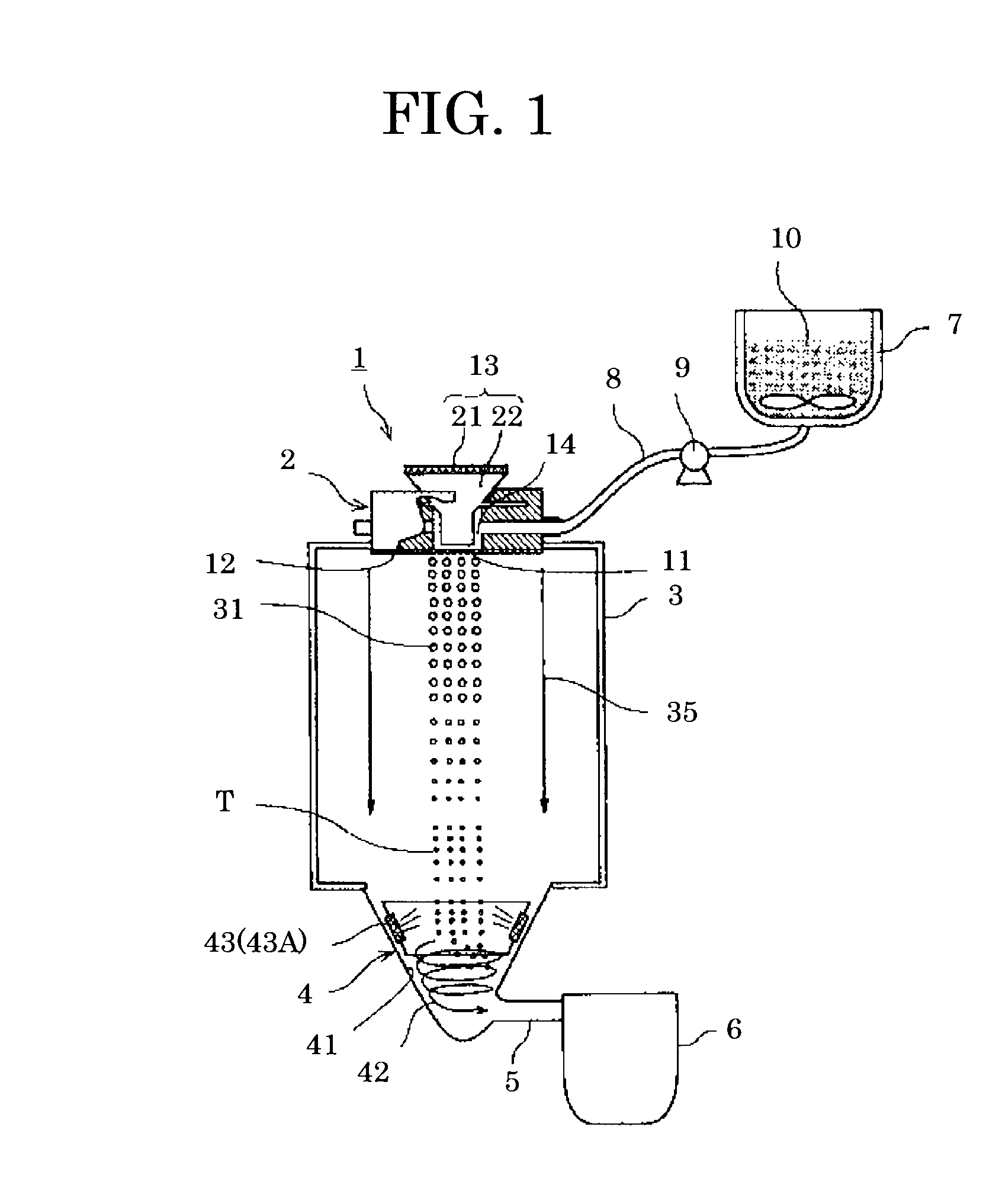Method for producing toner, and toner
a technology applied in the field of toner and production method, can solve the problems of degradation of chargeability and environmental stability, low productivity, and insufficient production method of polymerization toner, and achieve the effects of improving toners' low-temperature fixing properties, offset resistance, and development (chargeability) and durability
- Summary
- Abstract
- Description
- Claims
- Application Information
AI Technical Summary
Benefits of technology
Problems solved by technology
Method used
Image
Examples
example 1
Preparation of Colorant Dispersion
[0230]First, a dispersion of carbon black (colorant) was prepared.
[0231]Specifically, carbon black (Regal 400, product of Cabot Corporation) (20 parts by mass) and a pigment dispersant (AJISPER PB821, product of Ajinomoto Fin-Techno Co., Inc.) (2 parts by mass) were primarily dispersed in ethyl acetate (78 parts by mass) using a mixer having an impeller. The resultant primary dispersion was more finely dispersed through application of strong shearing force using a DYNO-MILL to prepare a secondary dispersion containing no aggregates. The resultant secondary dispersion was caused to pass through a PTFE filter having a pore size of 0.45 μm to prepare a dispersion containing submicron particles.
Preparation of Dispersion Containing Resin and Wax
[0232]A container equipped with an impeller and a thermometer was charged with a polyester resin (binder resin) (mass average molecular weight: 20,000) (200 parts by mass), modified paraffin wax A (8 parts by mass...
example 2
[0258]The toner composition liquid produced in Example 1 was fed to the head of a horn vibrator in a toner production apparatus illustrated in FIG. 1.
[0259]The thin film used was a nickel film (outer diameter: 8.0 mm, thickness: 20 μm) having truly spherical ejection holes (diameter: 10 μm), which was produced through electroforming. The ejection holes were arranged in a lattice form only within a circle having the center of the thin film and a diameter of about 5 mm so that the interdistance therebetween was adjusted to 100 μm. In this case, the effective number of ejection holes was about 1,000.
[0260]Under the following toner production conditions, the toner composition liquid was discharged as liquid droplets, followed by solidification through drying, to thereby produce toner base particles.
[Toner Production Conditions]
[0261]Flow rate of dry air: nitrogen gas for dispersion: 2.0 L / min; dry nitrogen gas in apparatus: 30.0 L / min
[0262]Inlet temperature of drying tower: 60° C.
[0263]...
example 3
[0270]The procedure of Example 2 was repeated, except that the ratio of the amount of modified paraffin wax A and that of unmodified paraffin wax was changed from 1.0 to 0.1, to thereby produce toner c.
[0271]When measured for its particle size distribution, the thus-produced toner was found to have a mass average particle diameter (D4) of 5.0 μm, and a D4 / Dn of 1.05; i.e., a very sharp particle size distribution.
[0272]Although this toner production was performed for 5 consecutive hours without nozzle clogging, the amount of liquid droplets discharged tended to be slightly decreased after 4 hours from the beginning of toner production.
[0273]Similar to Example 1, toner c and the same carrier were mixed with each other to produce a developer, and then the thus-produced developer was evaluated for its cold offset property, hot offset property, and filming property. As shown in Table 1, the developer was found to exhibit good cold offset property, but to exhibit slightly poor hot offset ...
PUM
 Login to View More
Login to View More Abstract
Description
Claims
Application Information
 Login to View More
Login to View More - R&D
- Intellectual Property
- Life Sciences
- Materials
- Tech Scout
- Unparalleled Data Quality
- Higher Quality Content
- 60% Fewer Hallucinations
Browse by: Latest US Patents, China's latest patents, Technical Efficacy Thesaurus, Application Domain, Technology Topic, Popular Technical Reports.
© 2025 PatSnap. All rights reserved.Legal|Privacy policy|Modern Slavery Act Transparency Statement|Sitemap|About US| Contact US: help@patsnap.com



